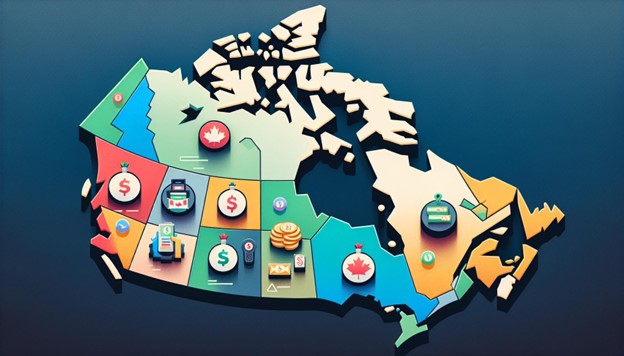Exploring through the financial milestones of life can often feel like a daunting journey, especially when it comes to saving for retirement. It’s a topic that’s easy to put on the back burner, particularly when you’re juggling daily expenses, mortgages, and student loans. Yet, understanding the average savings by age in Canada isn’t just a number game; it’s a crucial step towards securing your financial future.
Knowing where you stand in comparison to the national averages can offer a clear perspective on your retirement planning journey. Whether you’re just starting out or are closer to your retirement years, getting a grip on how much Canadians typically save at different stages of life can empower you to make informed decisions. Let’s jump into the numbers and see how you can align your savings strategy with your long-term financial goals.
Overview of Savings in Canada
When diving into the savings world of Canada, it’s essential to recognize that planning for retirement is a critical aspect of financial health. RRSPs (Registered Retirement Savings Plans) play a pivotal role in facilitating Canadians’ retirement savings, offering significant tax advantages. Contributing to an RRSP not only lowers your taxable income in the contribution year but also nurtures your funds in a tax-deferred environment until retirement.
Another critical component is understanding the Compound Annual Growth Rate (CAGR). With an assumption of a 6% return, the difference in savings over decades can be substantial. For instance, investing $30,000 per year at a 6% return could grow to nearly $5 million over 40 years due to the power of compounding interest. This highlights the importance of starting early and choosing investments wisely to capitalise on long-term growth opportunities.
Finally, Time deposit accounts, like CDs (Certificates of Deposit), offer a more secure but generally lower return savings option. They do not allow easy access to your funds before maturity, which can help prevent impulsive spending and ensure money remains untouched to accumulate interest over time.

How much will you need to retire?
Retiring comfortably in Canada is a goal you’re likely aiming for, but figuring out the exact amount needed can be a complex equation. Varying life circumstances and personal goals mean that a one-size-fits-all answer simply doesn’t exist. But, understanding the key factors influencing your retirement needs can offer a clearer picture.
Firstly, your housing situation significantly impacts your retirement savings requirements. If you plan to retire without a mortgage, you’ll need less in your savings. Conversely, carrying a mortgage into retirement means budgeting for ongoing payments.
Your envisioned lifestyle in retirement also plays a crucial role. Dreams of globe-trotting and indulging in luxury experiences elevate the required savings level to sustain such activities. So, aligning your savings strategy with your lifestyle expectations is crucial.
Another factor is your retirement age. An early retirement at 55 necessitates a larger fund to cover the additional years, compared to retiring at 65. This is because the number of years you’ll need your savings to last increases.
Also, the role of government pensions cannot be overlooked. The Old Age Security (OAS) and Canada Pension Plan (CPP) provide foundational income, but often, they won’t cover all expenses. This shortfall means relying on personal or workplace pensions and savings.
Finally, considering potential health issues is necessary, as significant health challenges could increase your expenditures, demanding a larger nest egg.
Summarizing, realistic planning tailored to your specific needs, accounting for housing, lifestyle, retirement age, government pensions, and health status, lays the groundwork for a secure retirement.
What the average person has saved
When it comes to retirement savings, Canadians have an average of $272,000 saved by the time they retire. This figure represents just cash savings and doesn’t include assets or pensions. Besides, the average Canadian household boasts a retirement savings account that approximates $514,000. For a deeper jump into specific savings vehicles, consider the average holdings in Registered Retirement Savings Plans (RRSPs), which stood at $144,613 as of 2022.
A report from CIBC suggests that Canadians believe they need around $756,000 for a comfortable retirement. But, this contrasts sharply with the reality where the average retirement savings amount to only $184,000. Alarmingly, 30% of Canadians report having no retirement savings at all, with an additional 19% having saved less than $50,000.
For younger Canadians, particularly those under 35, the financial world looks different. In this demographic, individuals part of an economic family hold an average of $77,836 in financial assets and $115,399 in pension assets. Conversely, their single or non-economic family counterparts have $27,425 in financial assets and $25,263 in pension assets. Across age groups, there’s a noticeable trend: as Canadians grow older, their savings and average net worth tend to increase.
Average Savings by Age Group in Canada

Understanding how much Canadians save at different stages of life is crucial to benchmarking your financial health. This section delves into average savings by age group, providing a clear snapshot of how your savings stack up against national averages.
Saving In Your 20’s
In your 20s, establishing a savings routine sets the foundation for future financial stability. Statistics Canada reports that individuals in their 20s who are part of an economic family have an average savings rate significantly higher than their counterparts not in an economic family. The emphasis during this decade is on creating an emergency fund and beginning retirement contributions, even though starting with lower earnings. The average savings for Canadians in their 20s not in an economic family hover around $8,000, while those in an economic family can see this figure slightly higher.
Saving In Your 30’s
By the time you reach your 30s, it’s expected that your career and earnings have started to grow, allowing for increased savings opportunities. The average savings for Canadians in their 30s climbs to approximately $45,000, reflecting the transition towards more substantial financial planning including home ownership and long-term investment strategies. For those within an economic family, the collective approach to savings and investments further boosts the average savings rate during this pivotal decade.
Saving In Your 40’s
The 40s are often marked by peak earning years, coupled with a more aggressive saving and investment strategy. On average, persons in an economic family have amassed savings around $212,000, mirroring the focused effort towards retirement planning and debt reduction. Individuals not in an economic family show a varied range of savings, typically around $120,000, as they navigate through major life expenses and continued investment in financial assets.
Saving In Your 50’s
Entering your 50s signals a crucial period for retirement planning, with an emphasis on maximizing contributions to retirement accounts. The average retirement savings for Canadians in their 50s stands at an impressive $442,000 for those in economic families. This uptick reflects the culmination of consistent savings habits, investment growth, and a shift towards more conservative financial assets. Individuals not part of an economic family see their average savings at around $240,000, emphasizing the importance of diligent savings and investment.
Saving In Your 60’s
As Canadians transition into their 60s, the focus shifts towards retirement preparation, with many nearing or entering the retirement phase. The average savings for individuals in their 60s within economic families peaks at $602,000, showcasing the result of lifetime saving and investment. For those not in an economic family, average savings are lower, averaging around $300,000, as individuals prepare for retirement with a mix of savings, government pensions, and other retirement income sources.
The journey through each decade brings its own set of financial challenges and milestones. Starting early, being consistent, and adjusting your savings strategy to fit your life stage and circumstances is key to building a robust financial future.
Regional Variations in Savings Habits
When exploring average savings by age in Canada, it’s crucial to note that savings habits vary significantly across different regions. Provinces with higher average incomes, such as Alberta and Ontario, often see residents saving more compared to those in regions with lower average incomes, like the Atlantic provinces. This disparity is largely attributed to the cost of living and available disposable income.
In urban centres such as Toronto and Vancouver, the high cost of housing significantly impacts the ability of individuals to save. Even though higher salaries in these cities, the proportion of income directed towards savings is often lower due to elevated living expenses.
Conversely, residents in provinces like Saskatchewan and Manitoba benefit from a lower cost of living. This affordability, coupled with stable job markets in certain sectors, allows for a greater portion of income to be set aside for savings.
Understanding these regional variations is essential for developing savings strategies that are realistic and effective. It highlights the importance of tailoring financial plans to not only one’s life stage but also their location within Canada.

Other Tips For Saving
When you’re looking to boost your savings, it’s essential to look beyond the basics of putting money aside each month. Diversifying income streams can significantly impact your ability to save. Consider part-time work, freelance gigs, or investing in stocks or real estate. Multiple income sources not only increase your savings rate but also provide a safety net.
Automating your savings is another crucial strategy. By setting up automatic transfers from your checking account to your savings account, you ensure that a portion of your income is saved without the need for manual intervention. This method helps in building savings consistently over time.
Cutting on non-essential expenses plays a significant role as well. Review your monthly expenses to identify areas where you can reduce spending. Simple changes like dining out less, opting for public transportation, or cancelling unused subscriptions can free up substantial amounts of money for savings.
Finally, take advantage of employer-sponsored retirement plans or government-assisted programs like RRSPs in Canada. These plans often come with tax advantages that can boost your savings over the long term.
Conclusion
Understanding your savings potential isn’t just about knowing the numbers. It’s about making those numbers work for you. With the insights on regional variations and practical tips provided, you’re now equipped to navigate your savings journey more effectively. Whether it’s through diversifying your income, automating your savings, or taking advantage of government-assisted programs, the power to enhance your financial future is in your hands. Remember, the right strategy for you is one that considers both your current life stage and your location within Canada. Start applying these strategies today and watch your savings grow.
Corben joined CREW as a relative newcomer to the field of real estate and has since immersed himself and learned from the experts about everything there is to know on the topic. As a writer with CREW, Corben produces informative guides that answer the questions you need to know and reports on real estate and investment news developments across Canada. Corben lives in Guelph, Ontario with his partner and their two cats. Outside of work, he loves to cook, play music, and work on all kinds of creative projects. You can contact Corben at corben@crewmedia.ca or find him on Linkedin at https://www.linkedin.com/in/corbengrant/.









